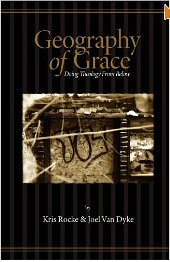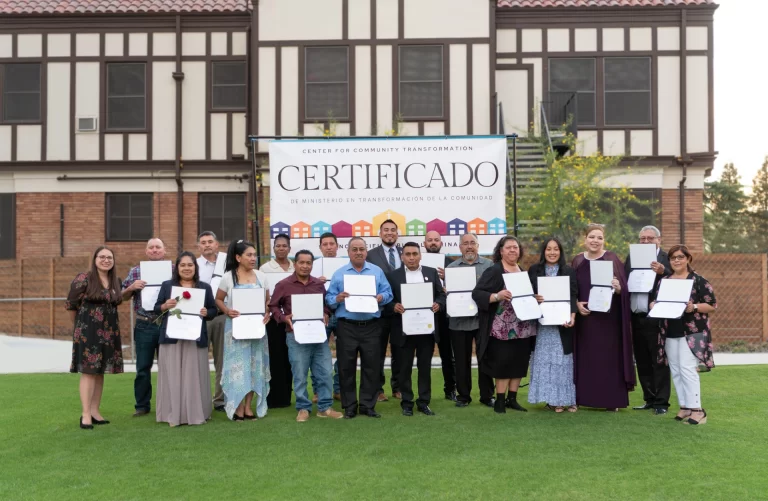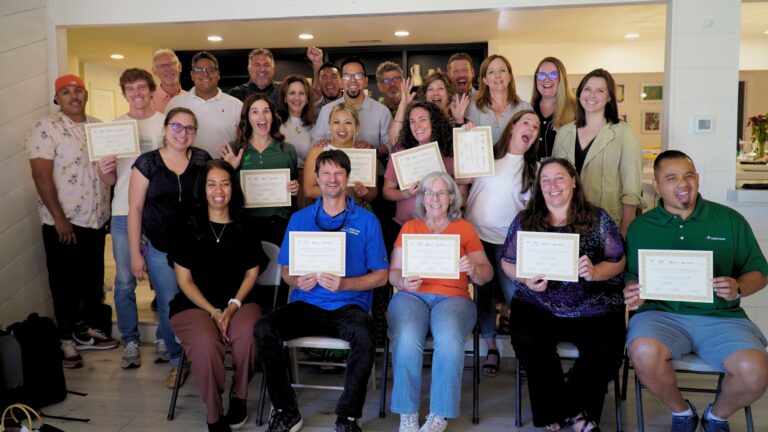 Where and with whom one stands determines one’s perspective on our world. In their book, Geography of Grace, Kris Rocke and Joel Van Dyke allow us to stand with them in their place among the urban poor. They give us the amazing opportunity to meet Central American gang members in maximum security prisons, street youth in Central America’s largest city, prostitutes on the streets of Santo Domingo, scavengers in city garbage dumps, orphans in Eastern Europe, those experiencing tribal conflicts in Kenya, and the extreme poor in some of the largest slums in the world. So why would we want to do that?
Where and with whom one stands determines one’s perspective on our world. In their book, Geography of Grace, Kris Rocke and Joel Van Dyke allow us to stand with them in their place among the urban poor. They give us the amazing opportunity to meet Central American gang members in maximum security prisons, street youth in Central America’s largest city, prostitutes on the streets of Santo Domingo, scavengers in city garbage dumps, orphans in Eastern Europe, those experiencing tribal conflicts in Kenya, and the extreme poor in some of the largest slums in the world. So why would we want to do that?
Their simple proposition is that grace—the grace found in and through Jesus Christ—“is like water—it flows downhill and pools up in the lowest places.”
Our world is growing increasingly separate, separated by class, according to experts like Charles Murray in Coming Apart, with rich and poor more divided into increasingly distinct and distant bubbles. At the same time, as Christianity is expanding rapidly in the global south—in Africa, Asia and Latin America—and is diminishing in the global north—North America and Europe—a question emerges: Is it even possible to find in the Bible a perspective broad enough and true enough to see beyond the particular bubble we find ourselves in, so that we might be a part of a larger reconciliation story God is weaving in our world?
This book answers that question in the affirmative. By mining difficult biblical passages through the eyes and alongside those living in the most perilous, violent and difficult urban places on the planet, Rocke and Van Dyke actually trace pathways to grace that instead of avoiding or denying pain and suffering, find them as street signs and lampposts to a deeper intimacy with the triune God.
This book will be threatening to those who are not sufficiently haunted by the scandalous lack of transformation among North American Christians as it answers the question, “What does the global south have to teach the global north missionally, theologically and biblically?”
“We wrote this book out of love for God’s creative work among those who live at the margins of society, but also out of a holy discontent for the gospel that is nurtured and proclaimed within the mainstream church—a gospel that can unwittingly sow seeds of violence and despair among society’s most vulnerable members, a gospel that has been and still is being exported from North America to hurting people around the world.”
These are no navel-gazing, angst-ridden reflections typical of confessionals written by newcomers to life among the poor. Both Rocke and Van Dyke are practitioners living in local communities with other practitioners and learning with an international community of practitioners in harsh urban contexts.
Together with their partners around the world, they have developed a jazz-like theological method that leads one in a dance between the situations on the streets of the abandoned communities they know and the biblical texts abandoned by those of us accustomed to the contours of comfort. The result is a depth of insight that opens the reader up to the reservoirs of strength and joy required for faith to flourish in hard places.
Ironically, I am writing this review after spending a week in Managua and Leon Nicaragua, in one of the contexts the authors have spent over 20 years learning within community. What I came away with, having just read their book, is not only a sense of intellectual challenge, pragmatic theology and a stunning lack of pretension, but something far more threatening: this stuff is field-tested and is being transmitted with the virile power of the first century gospel through careful training. I heard one of their co-trainers, Mario Marto, teach one of the passages in the book to a group of international urban missions leaders, powerfully, skillfully, joyfully, pointedly drawing parallels from his own slums of Santa Domingo, Dominican Republic, in flawless English as well as Spanish, with illustrations as heartbreaking, painful, real and redemptive as those in the biblical texts he was expositing.
This is a read that has the potential to rock your world. If you have ever felt the least bit uneasy, as I have, with those passages like Matthew 25 where Christ’s identification with the poorest presses me to a self-judgment that radically questions the easy, propositional salvation theologies of my youth, beware. This volume drives deep.
There are four parts: Descending, Hovering, Hanging, Ascending, following the movements in the life of Christ—incarnation, birth, life, death and resurrection. This makes Geography of Grace a great devotional for Advent and Lent seasons, a chapter at a time, individually, or with a circle of friends over some good Central American Java.





